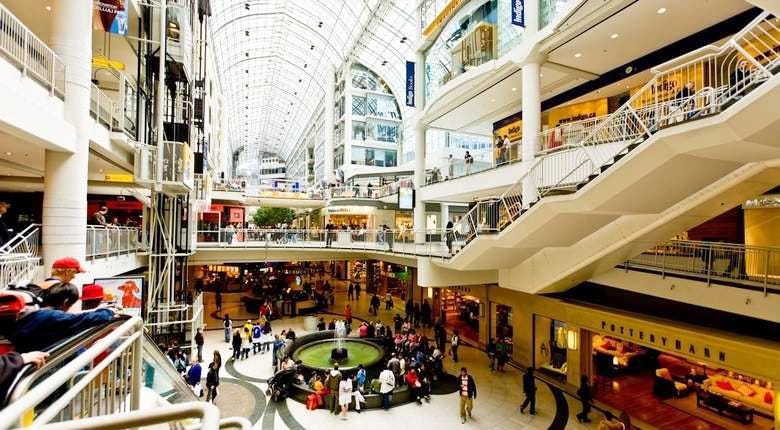How to Use People Counting Solutions to Boost Your Store’s Performance
Several metrics can be used to measure a retail store’s performance. Perhaps the most important one is foot traffic; the more visitors a store receives, the higher the potential for sales and growth. Furthermore, every other key performance indicator (KPI) depends on customer footfall.
Currently, a lot is being said in the digital solutions
sector about people counting technologies and how they can improve the performance
of brick-and-mortar retail stores. Below, we test the veracity of these claims.
Can these solutions truly boost KPIs and lead to an overall improvement in a
store’s performance? If yes, how do they work, and how can retail stores
leverage them? Find out below:

How People Counting
Technology Increases Customer Traffic
Once a retail store opens its doors, the manager’s first objective is to attract customers. Everything else—including getting visitors to make purchases, turning one-time buyers to store regulars, and improving inventory—comes after that. With people counting machines and systems, it becomes infinitely easier to do this.
Firstly, the system makes it possible for managers to measure current visitor traffic. With this, they can set attainable targets for the future and work toward it. Secondly, when new marketing campaigns are launched to attract customers, people counters can be used to measure their effectiveness. V-Count’s People Counting Technology, for example, comes with an Intelligence Platform. Via this platform, retailers can track different campaigns and identify which ones are most effective at pulling in customers.
Furthermore, retail stores can install counting devices outside their locations to measure street traffic. Data from these devices highlight how many people walked past the store without visiting. By improving window and external displays, more passers-by may be attracted to boost customer traffic.
People Counters, Sales,
and Conversion Rate
When a store is attracting enough visitors, the next KPIs to
improve on are sales and conversion rates. The more purchases that visitors
make, the higher the store’s revenues and profits. Some stores only worry about
sales and ignore the conversion rate completely. This is a mistake. As long as
a store has a steady stream of visitors, the easiest way to boost sales is to
increase the conversion rate.
The conversion rate represents the fraction of store visitors that make purchases. The higher the number of visitors that buy items, the higher the store’s conversion rate. Subsequently, the store makes more sales. So, how do people counting solutions boost conversion rates? One, they make it possible for retail stores to measure it accurately. By measuring it, managers can see if they’re only converting only 10-15% of visitors and devise strategies to improve the figure.
Secondly, they can figure out why visitors are not making purchases. Consider this: traffic from people counters shows that a store is busiest between 5 and 8 p.m. In this period, the store has a conversion rate of 8%.
Potential causes of the poor conversion may include low staff-to-customer ratio, long checkout queues, or bottle-necks in the store. With data from people counters, the exact problem may be pinpointed and solutions implemented. Afterward, the manager can keep tracking the metric to ensure that it never goes below a particular range.
The Importance of Customer
Satisfaction and Retention
This study shows that it’s five times more expensive to attract new customers than it is to retain old ones. This makes customer retention a critical KPI. So, how can one-time buyers be converted into regular customers? Ninety-six percent (96%) of respondents to a Microsoft survey said they considered customer service a significant factor for brand loyalty.
Customers want topnotch service when they visit stores. They expect that sales associates will always be present to answer their questions, they want short checkout lines, and they’d prefer that shipping remains hassle-free even during busy hours.
People counting solutions give managers the means to optimize staff scheduling and improve store operations. Data from door counters can be analyzed to show how many attendants are needed on the sales floor (and checkout counters) to keep the store running smoothly. Analytics from the people counting systems also pinpoint busy periods beforehand, giving them time to prepare for the increase in traffic.
As a result, all customers enjoy hassle-free shopping all the time. More customers are satisfied with the service they receive, and the customer retention rate improves.
How This Affects Your
Retail Store
If you own or manage a retail store, you probably have one of the problems above. You’re either not attracting enough footfall, not converting enough of your visitors, or not retaining enough customers. However, since you don’t have a people counting system, you don’t know. An easy way to know if you’re affected is to evaluate your store’s performance.
If you are not satisfied with past performance and you want an improvement, people counting solutions may have the answers you need. In addition to providing a way to track critical KPIs, this solution comes with a powerful reporting tool that shows retailers their pain points. This gives them a chance to implement new initiatives and record marked improvement.
Post Your Ad Here
Comments